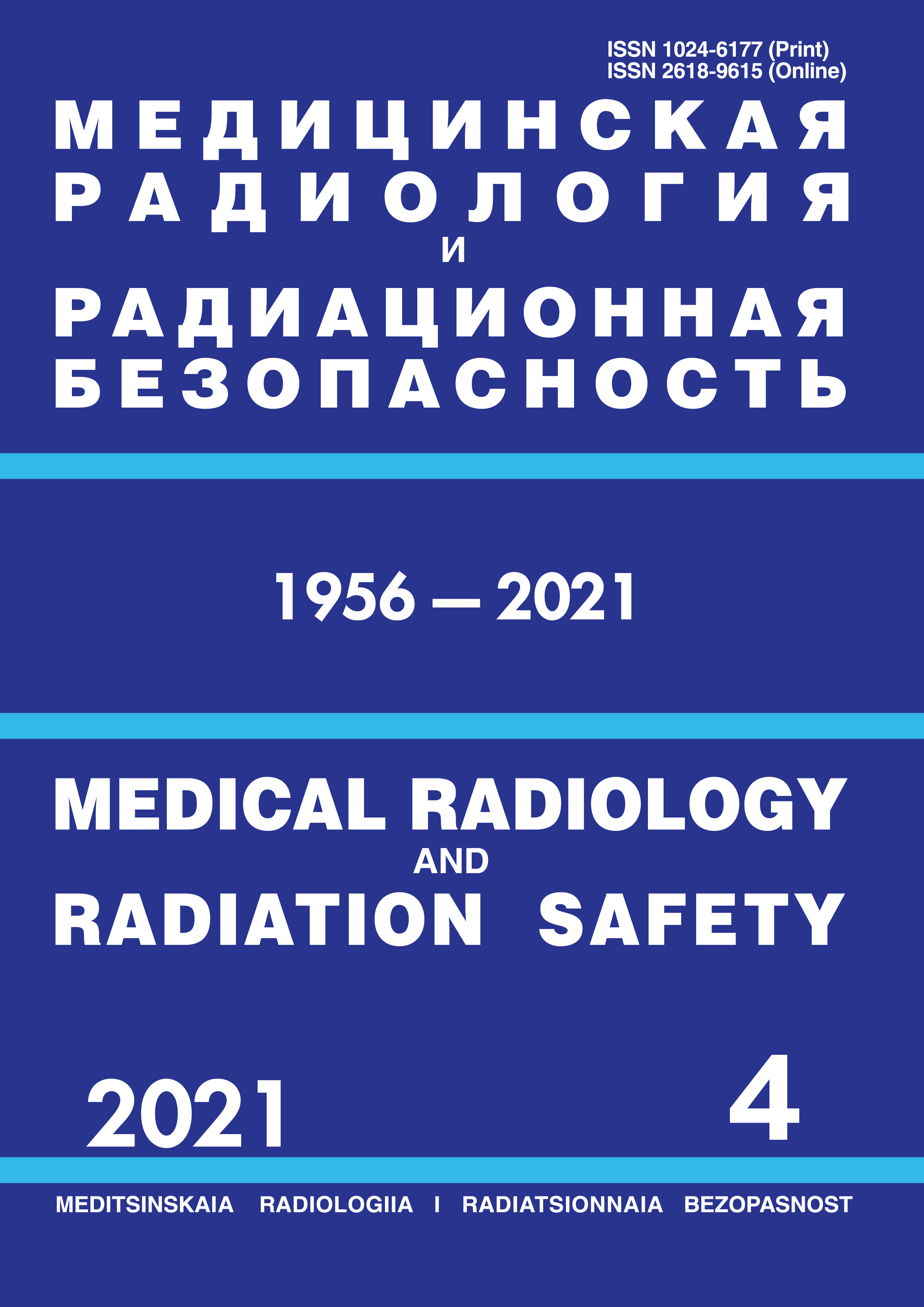Russian Federation
Moscow, Russian Federation
CSCSTI 76.33
CSCSTI 76.03
Russian Classification of Professions by Education 31.06.2001
Russian Classification of Professions by Education 31.08.08
Russian Classification of Professions by Education 32.08.12
Russian Classification of Professions by Education 14.04.02
Russian Library and Bibliographic Classification 534
Russian Library and Bibliographic Classification 51
Russian Trade and Bibliographic Classification 5712
Russian Trade and Bibliographic Classification 5734
Russian Trade and Bibliographic Classification 6212
Russian Trade and Bibliographic Classification 5708
Purpose: Comparative evaluation of the effectiveness of the domestic drug flagellin (development of the State Research Institute of High-Purity Biological Products, St. Petersburg) in an extended range of drug administration periods before and after irradiation, as well as evaluation of the possibility of using the micronucleus test as a biomarker of its effectiveness. Material and methods: The work was performed on male ICR CD1 mice weighing 20–22g. The radioprotective effectiveness of flagellin was evaluated by the 30-day survival rate of experimental animals in comparison with control groups. The cytogenetic effect was evaluated by a micronucleus test in polychromatophilic erythrocytes (MJ-PCE) of mouse bone marrow. Irradiation was performed on the RUST M1 X-unit at a dose rate of 1.1 Gy/min in the dose range from 7 to 10 Gy for survival assessment and at a dose of 1 Gy for the micronucleus test. Flagellin was administered intraperitoneally at 0.2 mg/kg for 18 h and 30 min before irradiation, 10 and 30 min after irradiation. The animals of the control groups were injected with a solvent – phosphate-albumin buffer at the same time and in the same volume. Results: The most effective was the use of flagellin for 30 min and 10 min in relation to radiation (survival at 8.5 Gy 92 % and 78 %, at 9 Gy 81 % and 55 %, respectively) with survival in the control 29 % and 0. In the most studied version of the introduction of flagellin 30 minutes before exposure, the FID values at the level of generally accepted estimates LD16, LD50, LD84, were 1.3; 1.2 and 1.2, respectively. Conclusions: It is of interest to further expand the time range of the use of flagellin, especially after irradiation. The use of the method of estimating the proportion of polychromatophilic erythrocytes with micronuclei in the bone marrow allowed us to identify the optimal timing of drug administration much faster than in terms of survival (MJ-PCR test was performed 24 hours after irradiation). The MJ-PHE indicator can be considered as a potential biomarker of drug-induced increased radioresistance (this was previously shown in our studies for betaleukin, indralin, and riboxin).
anti-radiation drugs, flagellin, X-radiation, mice, radioprotective efficacy, micronucleus test, polychromatophilic erythrocytes
1. Direktiva 2010/63/EU Evropeyskogo parlamenta i Soveta evropeyskogo soyuza po ohrane zhivotnyh, ispol'zuemyh v nauchnyh celyah. SPb: Rus-Lasa «NP ob'edinenie specialistov po rabote s laboratornymi zhivotnymi» 2012, 48 s.
2. Rukovodstvo po provedeniyu doklinicheskih issledovaniy lekarstvennyh sredstv. Chast' pervaya. M.: Grif i K. 2012. 944 s.
3. Heddle J.A., Cimino M.C., Hayashi M. et al. Micronuclei as an index of cytogenetic damage: past, present, and future //Environmental and Molecular Mutagenesis. 1991. Vol. 18. P. 277-291.
4. OECD Guideline for the testing of chemicals № 474. Mammalian Erythrocyte Micronucleus Test. Adopted 21st July 1997. 10 p.
5. Sycheva L.P., Lisina N.I., Schegoleva R.A.,Rozhdestvenskiy L.M. Antimutagennoe deystvie protivoluchevyh preparatov v eksperimente na myshah // Radiacionnaya biologiya. Radioekologiya. 2019. T. 59. № 4. S.388-393.
6. Burdelya L.G, Krivokrysenko V.I., Tallant T.C., et al. An Agonist of Toll-lair Receptor 5 has Radioprotect.ive Activity in Mouse and Primate models // Ssience 2008.V. 320. No. 5873. P. 226-230.
7. Krivokrysenko VN, Shakhov AN, Gudkov AV, Feinstein E. Identification of G-CSF and IL-6 as Candidate Biomarkers of GBLB502 Efficacy as a Medical Radiation Countermeasure // JPET Fast Forward. 2012 as DOI: 0.1124/jpet.112.196071. P. 1-46.
8. Grebenyuk A.N., Aksenova N.V., Petrov A.V. i dr. Poluchenie razlichnyh variantov rekombinantnogo flagellina i ocenka ih radiozaschitnoy effektivnosti // Medicinskiy Akademicheskiy Zhurnal. 2017. T .43. № 3. S.75-80.
9. Murzina E.V., Sofronov G.A., Aksenova N.V. i dr. Protivoluchevye svoystva bakterial'nogo flagellina // Izvestiya Rossiyskoy Voenno-Medicinskoy Akademii 2017, T. 36, №. 2, Pril.1, S. 242-243.
10. Murzina E.V., Sofronov G.A., Simbircev A.S. i dr. Ocenka radiozaschitnyh svoystv rekombinantnogo flagellina pri primenenii razdel'no ili v kombinacii s IL-1beta // Medicinskiy Akademicheskiy Zhurnal. 2018. T. 18. № 3. S. 77-84.
11. Murzina E.V., Sofronov G.A., Aksenova N.V i dr. Eksperimental'naya ocenka protivoluchevoy effektivnosti rekombinantnogo flagellina // Vestnik Rossiyskoy Voenno-Medicinskoy Akademii. 2018. №. 3. S.122-128.
12. Murzina E.V., Sofronov G.A., Aksenova N.V i dr. Perspektivnye dlya razrabotki novyh protivoluchevyh sredstv biotehnologicheskie preparaty // Vestnik Rossiyskoy Voenno-Medicinskoy Akademii. 2017. № 3. S.133-136.
13. Sapozhnikov R.Yu., Halimov Yu.Sh., Legeza V.I. i dr. Profilakticheskaya i lechebnaya effektivnost' rekombinantnogo flagellina pri ostrom radiacionnom porazhenii // Vestnik Ros. Voenno-med. akad., 2019. T. 3, №. 67. S. 141-144.
14. Lisina N.I., Schegoleva R.A., Shlyakova T.G., Zorin V.V., Shkaev A.E., Rozhdestvenskiy L. M. Protivoluchevaya effektivnost' flagellina v opytah na myshah // Radiacionnaya biologiya. Radioekologiya. 2019. T.59. №3. S.1-5.
15. Ocenka mutagennoy aktivnosti faktorov okruzhayuschey sredy v kletkah raznyh organov mlekopitayuschih mikroyadernym metodom. Metodicheskie rekomendacii. Izd. Oficial'noe. M., Mezhvedomstvennyy nauchnyy sovet po ekologii i gigiene okruzhayuschey sredy RF. 2001. 21c.
16. Sycheva L.P., Rozhdestvenskiy L.M., Lisina N.I. i dr. Antimutagennaya aktivnost' i gepatoprotektornoe deystvie protivoluchevyh preparatov // Medicinskaya genetika. 2020. T. 19. № 9 (218). S.81-82.





